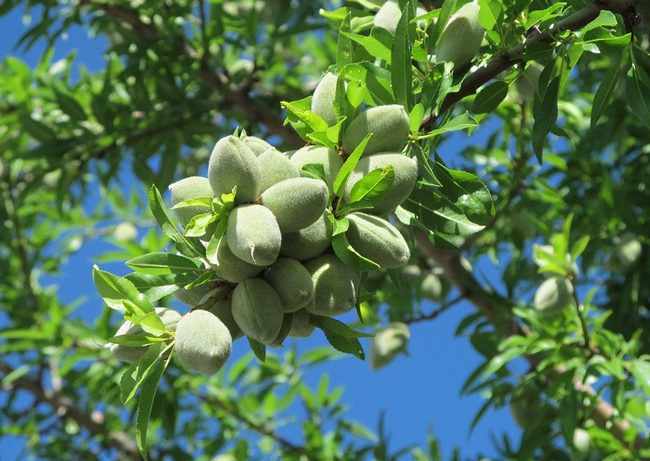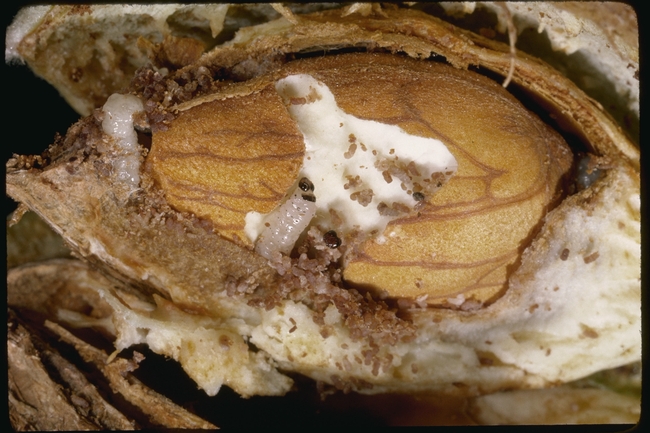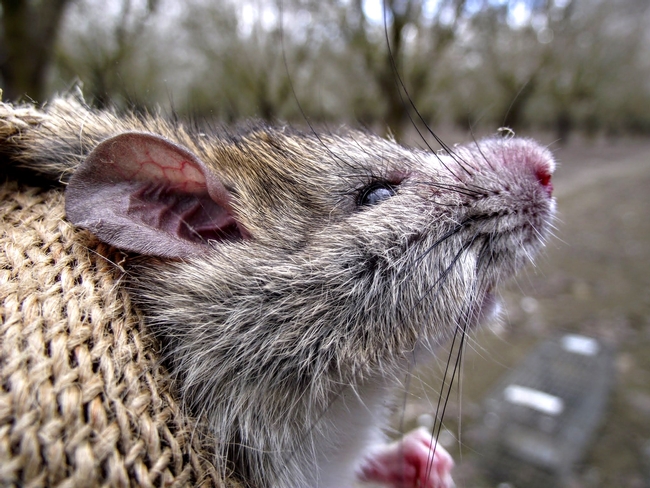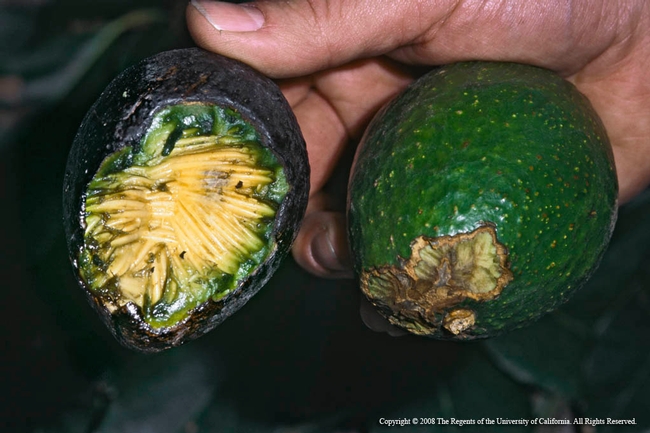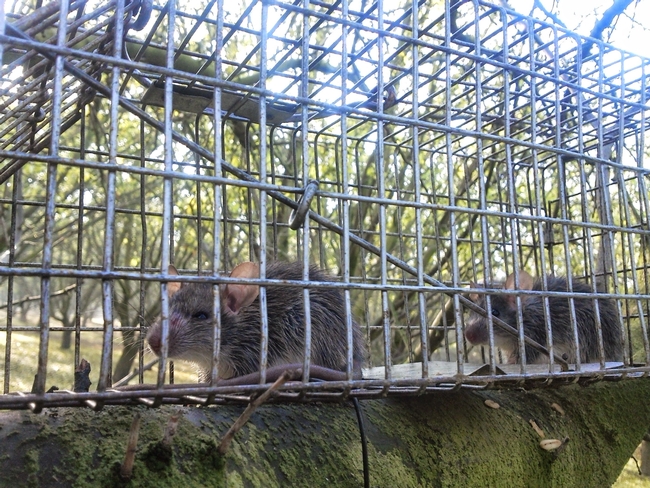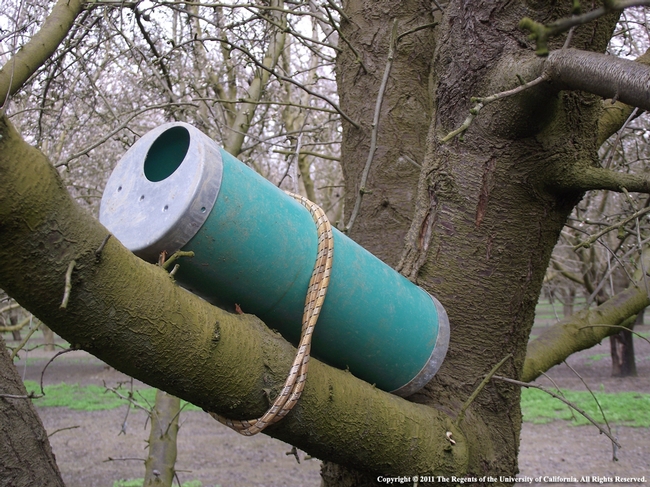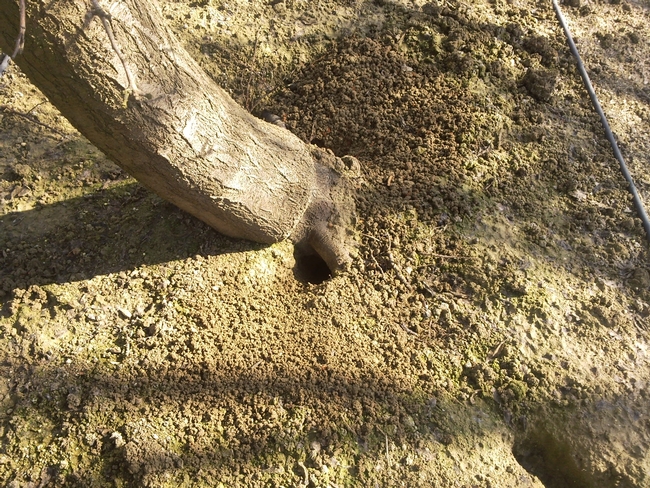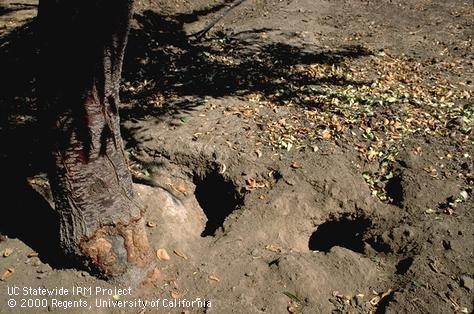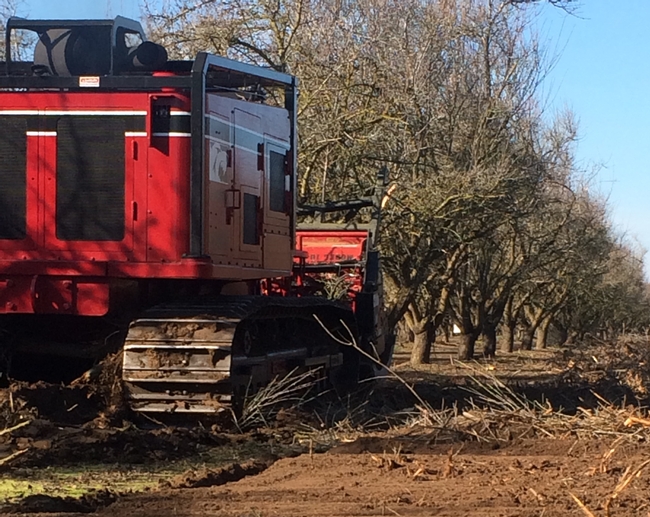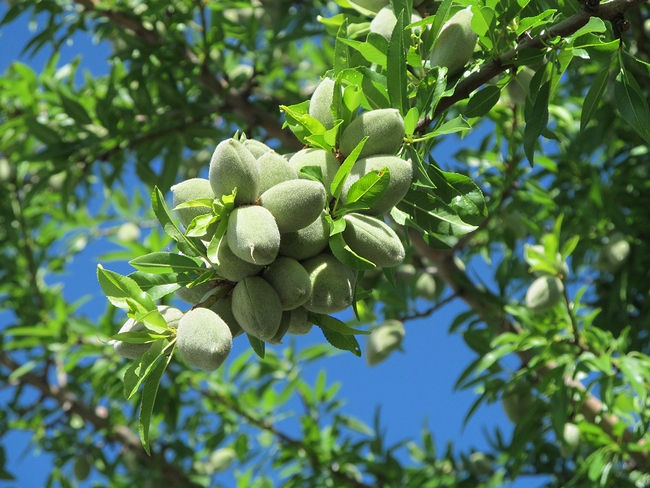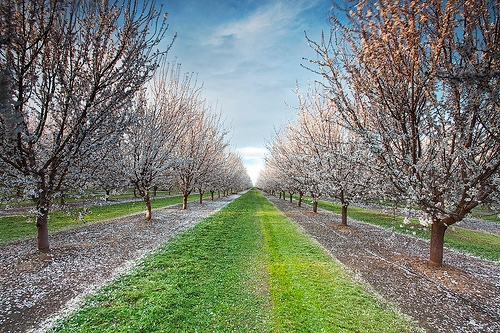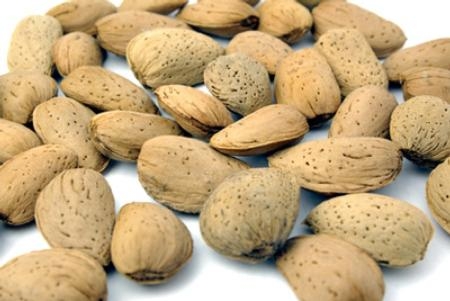Posts Tagged: Almonds
UC ANR updates cost estimates for growing almonds
UC Agricultural Issues Center has released new studies estimating the cost and returns of establishing an almond orchard and producing almonds for three growing regions of California.
“These cost studies are valuable for agricultural producers all along the continuum – growers considering entering into a new crop production business, less experienced growers, and those with decades of experience,” said Emily Symmes, UC Cooperative Extension integrated pest management advisor for the Sacramento Valley. “The information in these cost studies allows growers to evaluate their production practices and associated costs relative to an exemplary hypothetical orchard specific to their geographic region, and can help with development of business models, crop insurance and lending.”
In 2018, almonds ranked third among California commodities with almond growers receiving nearly $5.5 billion in cash receipts.
The cost analyses are based on hypothetical farming operations of well-managed almond orchards, using cultural practices common to the region. Local growers, UC Cooperative Extension farm advisors and supporting agricultural representatives provided input and reviewed the methods and findings of the studies.
“The recent almond updates for the Sacramento and San Joaquin valleys reflect costs associated with the continually evolving conditions facing agriculture,” said Symmes, who co-authored the almond cost studies. “Some of the notable updates include labor, irrigation and pest management costs – all integral to producing and delivering a high-quality crop.”
The researchers based one study in the Sacramento Valley, one in the northern San Joaquin Valley and the other in the southern San Joaquin Valley.
The southern SJV study is based on an orchard that uses double-line drip irrigation, whereas the other two locations use microsprinkler irrigation. All are multi-year studies, estimating costs from removal of the previous orchard, through almond orchard re-establishment and the production years. The economic life of the orchards used in these analyses is 23 to 25 years.
Navel orangeworm (NOW) is a major pest in almond production; Symmes and her co-authors describe in detail the pesticide applications and winter sanitation methods for each location for NOW control and include the costs.
The authors describe the assumptions used to identify current costs for orchard establishment, almond production, material inputs, cash and non-cash overhead. A ranging analysis table shows net returns over a range of prices and yields.
The new studies are titled:
- Sample Costs to Establish an Orchard and Produce Almonds in the Sacramento Valley - 2019
- Sample Costs to Establish an Orchard and Produce Almonds in the Northern San Joaquin Valley - 2019
- Sample Costs to Establish an Orchard and Produce Almonds in the Southern San Joaquin Valley - 2019
The studies are available for free download at the UC Davis Department of Agricultural and Resource Economics website at http://coststudies.ucdavis.edu. Sample cost of production studies for many other commodities are also available on the website.
For additional information or an explanation of the calculations used in the studies, contact Donald Stewart at the UC Agricultural Issues Center at (530) 752-4651 or destewart@ucdavis.edu. To contact a local UC Cooperative Extension advisor, find the UCCE office in your county at http://ucanr.edu/County_Offices. The Agricultural Issues Center is a statewide program of UC Agriculture and Natural Resources.
Roof rats unnerve farm workers, damage orchard crops
Monitor for rodent activity and use bait stations before the growing season to prevent problems, UC ANR scientists recommend.
Roof rats are running rampant in California orchards this year, according to UC Agriculture and Natural Resources scientists.
“In pistachio and other nut orchards, roof rats are burrowing and nesting in the ground where they're chewing on irrigation lines, causing extensive damage,” said Rachael Long, UC Cooperative Extension advisor. “They are also nesting in citrus trees, feeding on the fruit and terrifying field workers when they jump out as people are picking fruit. The chewing pests are also girdling citrus limbs, causing branch dieback.”
The wet winter of 2017 led to lots of weed seeds for rats to eat. “Last season, rats were also nibbling on pomegranates, avocados, and other fruit and nut crops, rendering them unmarketable,” Long said.
Holes in the ground around the base of pistachio trees throughout a Yolo County orchard puzzled the grower.
“We looked for ground squirrels, but never saw any,” Long said. “We set up game cameras, but only got birds and rabbits. We put rodent bait in the holes, but the digging didn't stop.”
Long, the pest detective, cracked the case by consulting Niamh Quinn, UC Cooperative Extension human-wildlife interactions advisor based in Irvine. “She informed us that the damage we were seeing was from roof rats.”
Burrowing roof rats sounds like an oxymoron. While roof rats generally don't burrow in urban environments, their country cousins have been known to burrow.
“It's not true that they don't burrow,” Quinn said. “When I worked as staff research associate for Roger Baldwin, UC Cooperative Extension wildlife specialist, that is mostly what we studied, burrowing roof rats in orchards.”
Control measures
Baldwin said, “It seems to be a good year for rats in a number of different areas and crops throughout the state. I've received more questions and comments about rats this year than perhaps the last 10 years combined. As for bait application, putting bait down burrow systems for rats doesn't usually work too well, so I'm not surprised that approach didn't work. Growers will likely have better luck with bait stations in the trees.”
Because the rats climb, Baldwin suggests attaching bait stations to tree branches.
“In addition, elevating the bait stations will eliminate access to bait for many protected mammal species, such as kangaroo rats,” Long said. “The bait diphacinone grain can be purchased from some ag commissioners' offices. This is what Roger Baldwin said they tested and it worked.”
As for the bait stations, they should be designed so that there isn't any spillage for nontarget animals to eat, Long said.
When roof rat outbreaks occur, rodenticides are often needed to prevent crop damage. However, timing is critical as diphacinone use is highly restrictive and not allowed during the growing season, which is beginning as the weather warms.
“Check the product label for application instructions,” Long reminds growers. “It's the law.”
Identifying the pest
One way for growers to identify whether they have roof rats is by the size of the burrows. The nocturnal pests are active above ground in trees and below ground.
“Roof rats can forage away from their nest, so you won't likely find signs of their activity, such as rat droppings outside their burrow, to help identify them,” Long said.
Ground squirrels are active during the day, so they are more likely to be seen, dig holes about 4 inches in diameter and forage above ground near their burrows. Vole and mouse holes are 1- to 2-inches in diameter. Roof rat holes are typically 3 to 4 inches in diameter and might have nut shells in front of them, for example pistachio or almond shells. Rabbits will feed on seedling crops, but do not dig burrows.
Roof rats are prolific breeders that reproduce year-round, according to Baldwin. Females typically have three to five litters per year with five to eight young, enabling their populations to rapidly increase. The omnivores feed on a wide variety of plant and animal materials, allowing them to adapt to any environment, including urban and agricultural lands.
“Rats are sneaky and hard to spot,” Long said. “If you see damage, including digging in the soil but no wildlife, suspect rats.”
For more information on controlling roof rats, download Quinn and Baldwin's free UC ANR publication 8513, Managing Roof Rats and Deer Mice in Nut and Fruit Orchards at http://anrcatalog.ucanr.edu/Details.aspx?itemNo=8513.
For more information about ground squirrels, download the free UC IPM Best Management Guidelines http://www.groundsquirrelbmp.com or UC IPM Pest Note http://ipm.ucanr.edu/PMG/PESTNOTES/pn7438.html.
UCCE is taking the melodrama out of almond orchard recycling
Almond farmers will remember a UCCE demonstration last February when the 50,000-pound Iron Wolf rolled like a tank through an almond orchard in Chowchilla, ripping whole trees into shreds and incorporating the wood into the soil.
Researchers are now considering a less dramatic approach to removing an old orchard and incorporating the wood chips into the soil onsite. Combining a traditional horizontal chipper with a wood chip spreader modified for this purpose can be a viable alternative to the now-mostly banned burning of old orchards or transport of almond tree residue to co-generation facilities that convert biomass to energy.
“It's still cheaper for the farmer if he or she can sell the wood chips for co-generation,” said Brent Holtz, UC Cooperative Extension advisor in San Joaquin County and the research leader. “But co-generation plants are closing and our research is showing that incorporating the biomass into the soil has many benefits.”
When the wood breaks down, it returns nutrients to the soil. Organic matter increases, resulting in carbon sequestration, important for moderating the release of greenhouse gases into the atmosphere that may contribute to climate change.
The chipper and spreader combination pencils out at about $1,000 per acre, while the Iron Wolf costs about $1,500 per acre.
“The Iron Wolf turned out much more expensive and slower than we anticipated,” Holtz said. “It could only grind up and incorporate about two acres of trees per day, while the horizontal chipper can chip 15 acres per day. With the chipper and spreader combination, the chips do have to be disked in, which most growers can easily do.”
The whole orchard recycling project was funded by the Accelerated Innovation Management program of the Almond Board of California.
Whole Orchard Recycling Demonstration
11630 S. Airport Way (near Roth Road), Manteca, Calif.
Thursday, Oct. 13, 2016
10 a.m.
Whole almond orchard recycling and the effect on second generation tree growth, organic matter and soil fertility presentation
Brent Holtz, Ph.D., UC Cooperative Extension advisor
10:30 a.m.
Kuhn & Knight Wood Chip Spreading Demonstration
Randy Fondse, G & F Ag Services, Ripon, Calif.
11 a.m.
Morbark Horizontal Chipper Demonstration
Randy Fondse, G & F Ag Services, Ripon, Calif.
UC releases new cost studies for growing almonds
The cost analyses are based on hypothetical farm operations of well-managed orchards, using practices common to each region. Growers, UC ANR Cooperative Extension farm advisors and other agricultural associates provided input and reviewed the methods and findings of the studies. Two studies estimate the costs for establishing and producing almonds grown in the northern San Joaquin Valley and Sacramento Valley using micro-sprinkler irrigation. These are multi-year studies, estimating costs from previous crop (orchard removal) through orchard establishment and the production years.
The study for organic almonds takes into consideration growing conditions in the northern San Joaquin Valley and complying with the National Organic Program. This study is based on an orchard that began the transition period and certification as organic after the second year of establishment. The trees in this study are in production and at full bearing. This organic almond orchard uses a solid-set sprinkler system.
The economic life of the orchards used in this cost analysis is 25 years. The authors describe the assumptions used to identify current costs for the almond crop, material inputs, cash and non-cash overhead. A ranging analysis table shows profits over a range of prices and yields. Other tables show the monthly cash costs, the costs and returns per acre, hourly equipment costs, and the whole farm annual equipment, investment and business overhead costs.
The new studies are titled as follows:
- Sample Costs to Establish an Orchard and Produce Almonds in the San Joaquin Valley – North- 2016
- Sample Costs to Establish an Orchard and Produce Almonds in the Sacramento Valley – 2016
- Sample Costs to Produce Organic Almonds in the San Joaquin Valley - North - 2016
Free copies of these studies and other sample cost of production studies for many commodities are available. To download the cost studies, visit the UC Davis Department of Agricultural and Resource Economics website at http://coststudies.ucdavis.edu.
The cost and returns program is funded by the UC Agricultural Issues Center, which is part of UC Division of Agriculture and Natural Resources, and the UC Davis Department of Agricultural and Resource Economics.
For additional information or an explanation of the calculations used in the studies, contact Don Stewart at the Agricultural Issues Center at (530) 752-4651 or destewart@ucdavis.edu, or Christine Gutierrez at (530) 752-1520 or cagut@ucdavis.edu.
Almonds become California's second-most valuable commodity
When California publishes its crop report in November, there will be a significant change in the ranking order of the state’s top agricultural commodities. In 2011, for the first time ever, the value of the California almond crop surpassed the state’s iconic grape industry to move into second place, behind dairy.
California almonds are on a roll. In the last 20 years, scientific discovery and grower ingenuity have nearly doubled almond per-acre productivity. A good yield in the 1980s was 1,400 pounds per acre. The average yield for 2011 was 2,670 pounds of shelled almonds per acre.
Forty years ago, California farmers produced less than 100 million pounds of almonds on about 200,000 acres of almond orchards. Mechanization, improved irrigation efficiency, advances in insect and disease management, pruning research and fertilization studies have fueled explosive growth in the industry. Farmers in California’s Central Valley now tend 760,000 acres of almond trees, producing about 2 billion pounds of shelled nuts a year. The crop, which represents 100 percent of U.S. almond production and 75 to 80 percent of world production, was valued in 2011 at $3.87 billion, surpassing table, wine and raisin grapes, which were valued at $3.86 billion.
“Even with this record production, we have more demand than we have supply,” said Bob Curtis of the Almond Board. “The driver behind that is nutrition studies that show almonds are a healthy food and snack.”
A tremendous amount of UC research is behind the California almond success story, said Bruce Lampinen, UC Cooperative Extension specialist in the Department of Plant Sciences at UC Davis, an expert in almond canopy management.
“Higher density plantings of almonds and a trend towards less pruning, and improved water management have led to much higher yields,” Lampinen said.
Many almond growers have replaced flood irrigation with micro-sprinkler or drip irrigation, said Larry Schwankl, UC Cooperative Extension specialist in the Department of Land, Air and Water Resources at UC Davis. These irrigation systems increase the precision of water and fertilizer application. Over the years, UC Cooperative Extension advisors and specialists established demonstrations of micro-sprinkler and drip systems in many parts of the Central Valley and reached out to farmers to show how they could be managed to optimize production.
“Twenty years ago, we simply guessed at the amount of water that the trees needed and we applied it on a calendar basis,” said Joe MacIlvaine, president of Paramount Farming Company in Kern County, one of the state’s largest growers of almonds, pistachios and pomegranates. “Today, we are delivering water and nutrients directly to the root zones when they are needed.”
Two decades ago, a granular form of nitrogen fertilizer was generally applied to almond orchards in the fall to allow winter rain and irrigation to move it into the soil for use by the trees in spring and early summer. Nitrogen use efficiency was believed to be about 40 percent. Now, nitrogen fertilizer is applied through the irrigation system during the growing season, when the tree needs it.
“Today, our nitrogen use efficiency can be as high as 85 percent,” said Blake Sanden, UCCE advisor in Kern County, an irrigation expert. He and Patrick Brown, professor in the Department of Plant Sciences at UC Davis, have conducted nitrogen trials in almonds with Paramount Farming.
“When you increase the conversion of applied nitrogen fertilizer to higher crop yield, there is significantly less potential for nitrogen to leach below the rootzone and contaminate groundwater,” Sanden said. “But each field is unique and requires site-specific management to achieve these high levels of efficiency.”
Another area where UC research has led to significant crop yield growth is in canopy management and tree spacing. Research by Mario Viveros, UCCE advisor emeritus in Kern County, and other scientists showed that a tendency among growers to over prune was taking a toll at harvest time.
“A lot of farmers who are now growing almonds had experience with fresh fruits, where you do need to prune to get light on the fruit for good color. In almonds more canopy generally means more yield,” Lampinen said. “Today, most almond growers only prune when branches are growing in the way of tractors or other equipment.”
UC research also found that orchards planted with traditional wide spacing between the trees weren’t making the most efficient use of sunlight on the farms. Older orchards had 60 to 70 trees per acre. Today, almond orchards are planted at an average density of about 110 trees per acre based on results of UC research.
However, studies have also shown that crowding still more trees into orchards triggers diminishing returns. In almond production, the nuts are shaken from the trees to dry on the ground before they are harvested.
“If the orchard floor becomes too shaded by trees planted too densely, the orchard floor temperature and humidity become optimal for growth of pathogens that could become a food safety problem,” Lampinen said. “You want enough sunlight to hit the orchard floor to reduce potential pathogens, like salmonella.”
MacIlvaine acknowledged the role of UC Cooperative Extension in helping the almond industry achieve the production milestone in 2011.
“The University of California has been a wonderful partner in improving our farming practices,” he said. “The whole system is not only more efficient, but more sustainable at the same time.”
Hear more of MacIlvaine's comments in the video posted below:

